38 models built between cars and engines, 40 weeks per year all over the five continents, a constant line outside his house of people offering him new jobs. Nicola Materazzi, the visionary Ferrari engineer, a life for engines and for his books.
His Ferraris are memorable and the F40 is perhaps the most Ferrari of the Ferraris. It was the first hypercar, that many have tried to copy, a road car providing F1 performances, “an extremely difficult thing”, he said.
To Ferrari who was asking him to design it getting sentimental (you have to make it for me, you have to make it for me, I’m almost ninety…), he answered: “but on one condition, I want to be alone.” And he added: “and the car, I did it all myself, from top to bottom, without a meeting.”
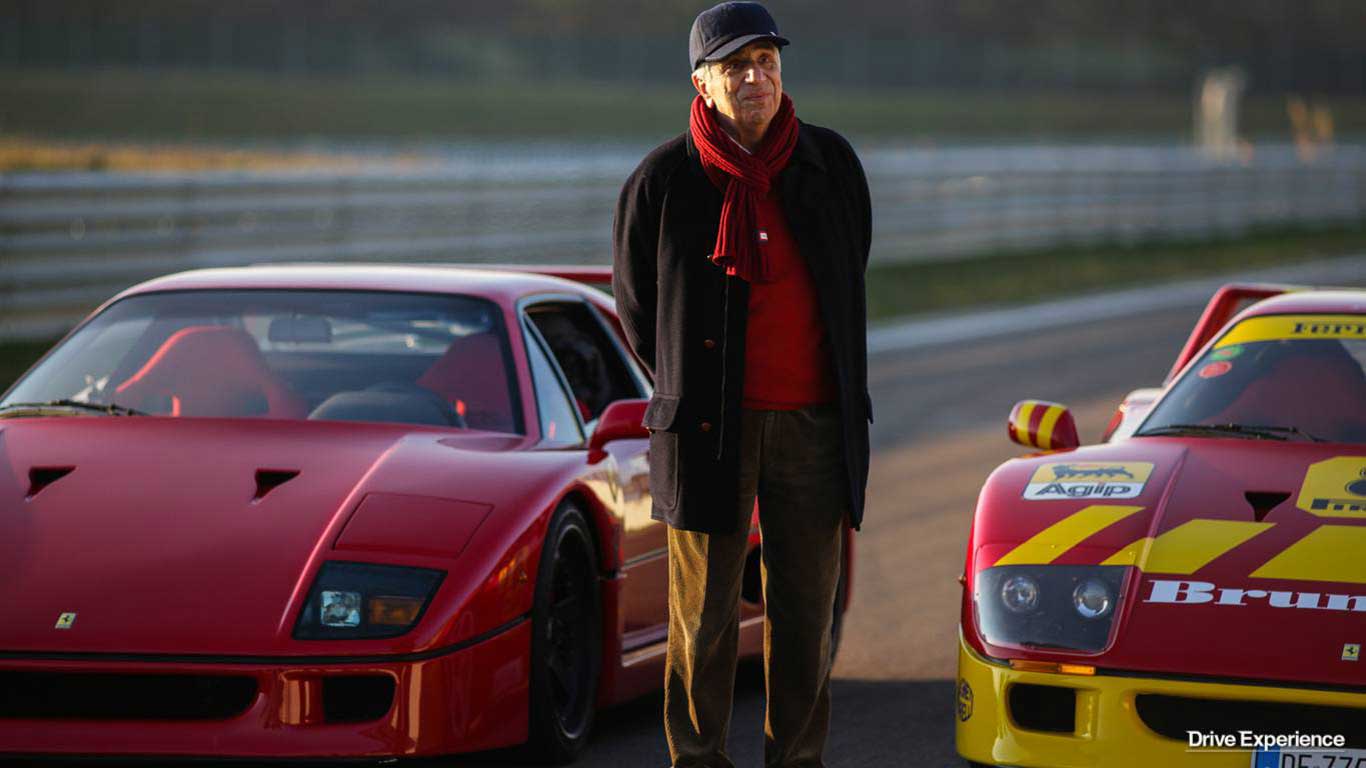
Historical memory of Ferrari and a sagacious and bitter critic of Fiat activities, of some of its incompetent technicians and of Agnelli family, possessing a little passion for cars and very concerned instead, he said, about earning money, often at the expense of Italians. A treasure trove of anecdotes, the product of experience and unique skills.
Nicola Materazzi, the father figure of the twin-turbocharged supercar, was born in Caselle in Pittari in the province of Salerno in 1939. After graduating from the University of Naples, he spent a year working as an assistant professor, then landed a job at Lancia in the automaker's technical department. Here he dealt a lot with mathematical approaches to engineering problems. A tough job, more so if you remember that computers weren’t exactly a thing in the 1970s.
Following the Stratos, of which he was responsible for, Materazzi went on to develop the Formula Fiat Abarth racing car. Then Osella came up on his agenda, where Nicola was responsible for Formula 2 and Formula 1 single-seater projects.
Come 1979, the man landed at Ferrari as head of the technical department within the racing division. Materazzi convinced Enzo and the rest of the engineers to experiment with turbochargers, landing projects such as the 208 Turbo, 288 GTO Evoluzione, 328, 412 GT, Testarossa, F40 and the Tipo 268 engine used by Lancia in the LC2 prototype racing car.
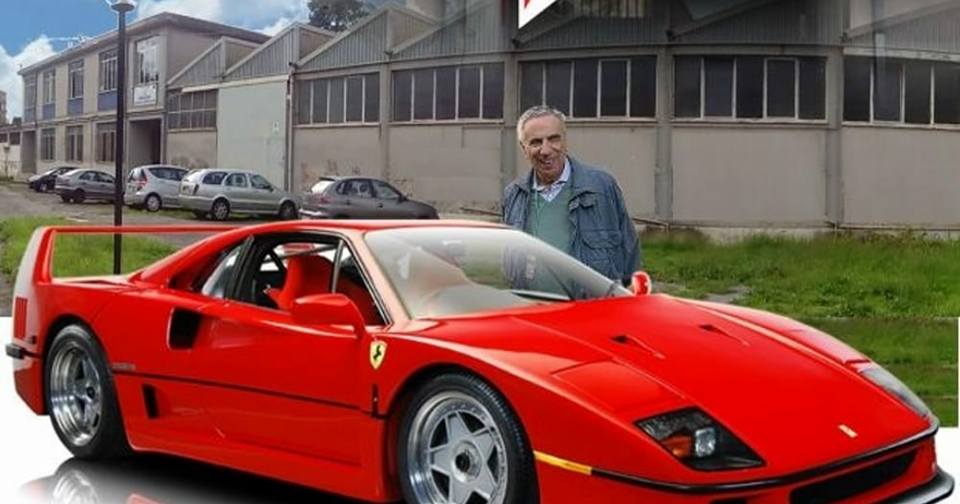
Following the Prancing Horse, he went to Cagiva, Bugatti and Industria Motociclistica Laverda.
In 1999 he started the design of the car Edonis, which was presented in Modena on 1 January 2001 (the first car of the third millennium). His projects covered topics ranging from the go-kart of 1961 to Formula 1, from 50cc scooter engines to large industrial diesel ones of about 30.000cc. Great lover of reading, he has more than 12.000 books in his library.
Few cars stir the soul of the driver as much as Ferrari does and, among the greatest hits that came out of Maranello, the F40, the most extreme supercar of the 1980s, is up there at the top with the best of them, 250 GTO included. The 40th-anniversary model came to be in 1987 and was the final Ferrari blessed by “Il Commendatore” himself.
Similar to the Stratos, F40 is one of the most fulfilling projects Materazzi, the mastermind behind it, worked on during his professional life. The F40 is surely a Ferrari for the purest supporters of performances without compromise, even at the cost of leaving the comfort and a friendly relationship with the car. A real Ferrari for a few “ferraristi”: not so much for its rarity (far beyond a thousand of them were produced at the end), as it is for its indomitable nature, for its beast and awe-inspiring charm.
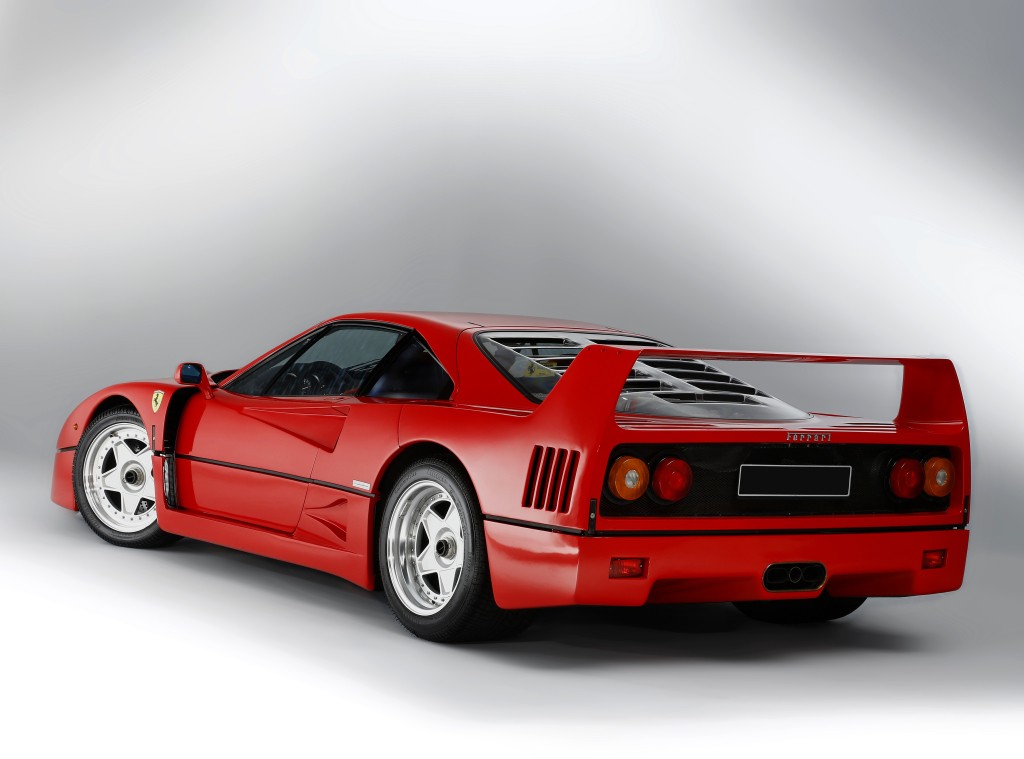
Beautiful, with wings and cavities everywhere. Even before his official launch Enzo Ferrari had already in his pocket 900 orders, of people who, at the mere hearing the car description, wasted no time in paying a large deposit to buy it. The car, which was basically a derivation of the 308 GTB, would turn the automobile environment upside-down for its aggressive aesthetic and its really impressive performances.
Nicola Materazzi, who created it and followed all development, talks about it as a daughter. Enzo Ferrari, after seeing the prototype of the 288 GTO Evoluzione (the mother of all F40) made by Materazzi, asked the technician to modify that scary creature for road use. The 288 GTO Evoluzione, which was produced by Ferrari in only two specimens and developed in other three by “officine Michelotto” in Padova, was a car designed for competitions in the category of Prototypes, but it had many solutions which would have been then directly transferred to the F40: next to the 288 GTO Evoluzione, in fact, the F40 clearly shows its connection with it.
They are two expressions of the purest and the most radical desire of strong feelings, of total control by the driver of the car system. No filter, any help from electronic devices able to protect the driver from any mistakes: the F40 represented state-of-the-art power. Ferrari asked who would have to worry about shapes, and which was the usual Pininfarina, to convey to customers competitiveness in an exuberant road suit: it’s like saying to go back to the tradition of race Ferraris, which were also used in the most common way by their owners.
Then a super strong push was needed, and therefore engine engineers were requested to study an adequate engine. Materazzi yessed Ferrari. Born with the double purpose of celebrating 40 years of Ferrari and replacing the mythical 288 GTO, the F40 had a twin IHI turbocharged 2.936 litre V8 engine, four valves per cylinder, with a power of 478 hp and a maximum torque of 577 Nm at 4000 r.p.m..
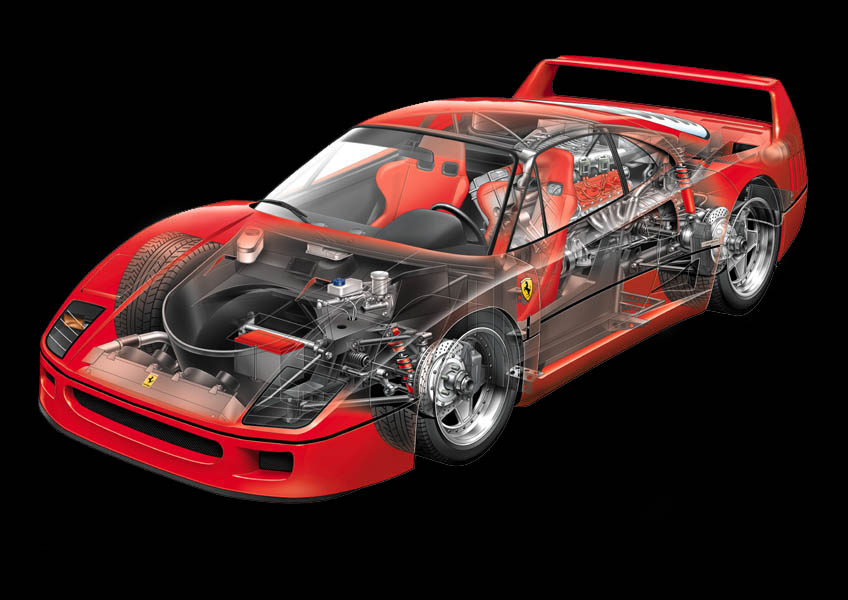
With a carbon body, it had a maximum speed of 325 km/h, new highest speeds for a road car. It went from zero to 100 km/h in 4,6 seconds. 1311 specimens of it were produced until 1992, despite the initial idea was to produce only 400 of them, and success was really huge. The purest and the most extreme of road Ferraris was the last to be produced with a supercharger and was low, wide and with a spoiler of dimensions never seen until then.
Car designers, names linked to the technique and the development of road and race models, are in automotive history (not only nationally), chilling out in the shade – of the paddocks, of the pits, of the engine test rooms, at the entrance of wind tunnels.
One of them is Nicola Materazzi who, regarding the figure of the designer, explains: “he is the one who is able to design the whole car. I demanded it first of all to myself and the permanent study of every subject and discipline that was about the automobile costed me quite a few sacrifices. I’m talking about engine, chassis, suspensions, aerodynamics. Often what people don’t understand is that, if you have an engine which gives 100% and a chassis which gives 60%, the whole car will give 60%. The weakest element affects the comprehensive behavior of the object.”
How was your relationship with Enzo Ferrari? “Exceptional. I didn’t work for the Ferrari, I worked for Ferrari. The motto of Ferrari was: “cars have to be made by automobile enthusiasts. Mass production does not fall within my mentality, I want to do an elite product.” The thing that I’m most proud of was complete confidence that Ferrari had in what I was doing. When Ferrari died I left.” Nicola Materazzi
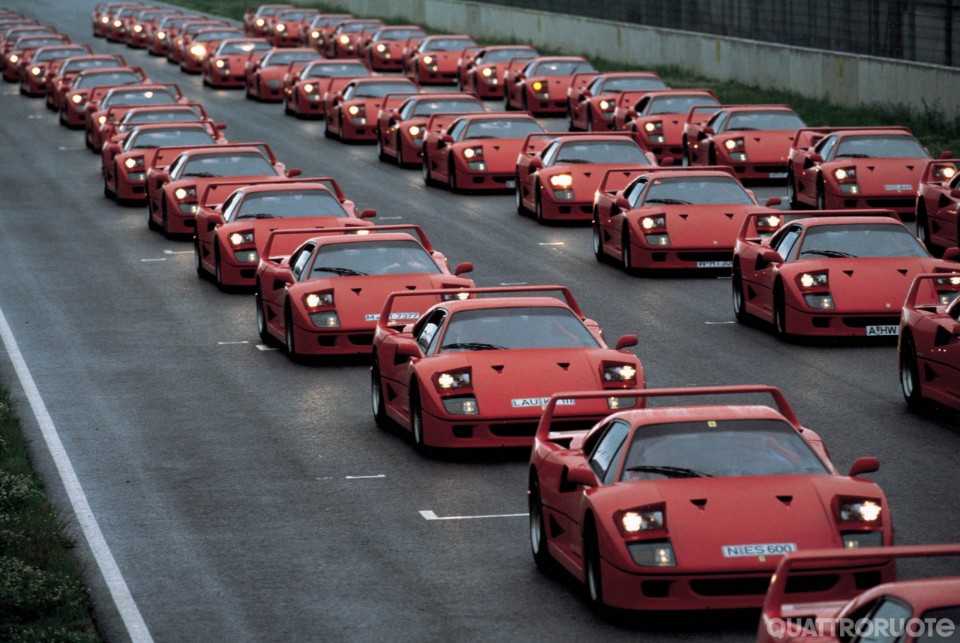
“I was lucky to do the job that I have wanted since I was 4 years old. I’ve never seen it like a job but like an amusement. I was passionate about designing, a creative work. I worked for 47 years always unto the breach.” Nicola Materazzi
“I have arrived at Ferrari because I believe that I was the first person ever to have rediscovered turbo in Italy, the application of turbo.” Nicola Materazzi
“Formula 1 races, I was a fan of races when they brought something new technically, today they are just a show, they are money machines.” Nicola Materazzi
About the accident between Vettel and Raikkonen at the start of 2017 Singapore GP: “it was Vettel’s fault, he had a bad start. Drivers are people who have particularly fragile personalities in some ways. If they are too much pumped, they feel this responsibilty of getting results and do that kind of stupid things. But it’s Marchionne’s fault, he doesn’t really understand about automobiles.” Nicola Materazzi
“Passion for engines, for cars, has been the connective tissue of my whole life.” Nicola Materazzi
Regarding the invasion of electronics in the field of automotive mechanic: “electronics needs to be restricted to those two, three really useful applications, otherwise it becomes an abuse.” Nicola Materazzi
Videos



Comments
Authorize to comment